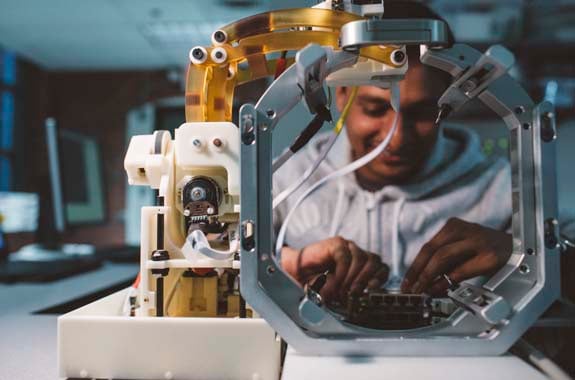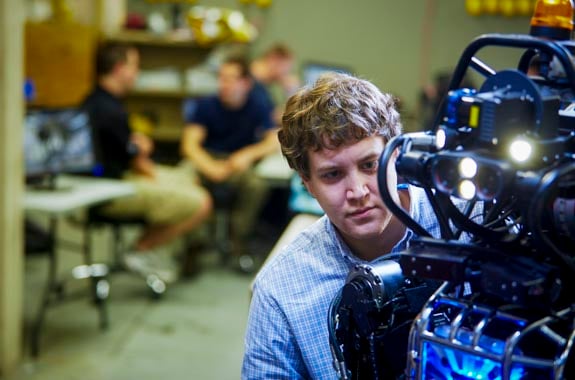What do a drone operator, genetic counselor, and data miner all have in common? None of these jobs existed five years ago, and all of them will likely transform again in the next five years. The crystal ball for career planning is decidedly less certain than it was in the past. By some estimates, 85% of the jobs that will exist in 2030 haven’t even been invented yet, and there are number of STEM skills that will help students be successful.

By Zach Wagner
It’s simply impossible to predict the jobs that will emerge from the technological disruptions or scientific breakthroughs in the future. If past holds precedent though, we know that those equipped with STEM skills will end up on top. They will have better career options, higher pay, and more room to maneuver when the robots come for their jobs.
The Problem with the STEM Pipeline
Despite the known advantages of pursuing STEM professions, there are some troubling signs that we are heading in the wrong direction:
-
As early as 2016, there were 3 million more STEM jobs than workers to fill them
-
Out of 71 nations participating in the PISA, the largest cross-national test to measure scientific literacy, U.S. placed 24th in Science and 31st in Math
-
80% of U.S. high school students are either uninterested or non-proficient in STEM subjects
Project these grim findings into a future where 85% of the jobs haven’t even been created and where most of them involve STEM competencies–data literacy, computational thinking, and advanced analytical skills–and you begin to see why industry leaders are sounding the alarms. They’re justly concerned about meeting the demands of a future workforce.

What’s truly compelling in this equation though has little to do with our international standings in Math and Science. What’s most concerning is that it appears students just aren’t interested in STEM. For starters, it’s obvious that without interest, no meaningful or lasting pursuit is likely to follow. It’s hard to motivate someone to do something they have no interest in doing, even if you can guarantee that they will make more money and have no shortage of opportunities. However, what’s more alarming is that for being as decisive as it is, it probably is not even true.
Only in a only a world where students still equate STEM with old men in white lab coats or rocket scientists would they also not rate themselves as interested in STEM. In that world, STEM is either isolating or unattainable.
The image of STEM hasn’t caught up with the new reality. If you ask students to rate their interest in careers not explicitly defined as STEM but requiring related skills, you get a very different picture.
90% of students rate creating video games for a living either very fun or somewhat fun
-
89% of students think it would be fun to earn a living working with marine life
-
86% of students think it would be fun to make websites for a living
The world of STEM has gotten a lot larger. The problem with the pipeline has nothing to do with capturing student interest, and everything to do with capturing their imagination.
What Role do Educators Play
With all of the evolution of STEM careers, it’s strange to see our teaching practices still stuck in the past. The standards-based, box-checking method of teaching STEM won’t work in a world where we don’t know what boxes matter in the future.
Fortunately, the problem with the STEM pipeline is also an opportunity. It’s an opportunity to re-imagine what and how we’re teaching. Plenty of teachers are embracing the challenge and getting creative with their lessons.
How well we do to keep students pursuing STEM and future-proofed for the jobs that don’t exist depends on how well we can capture their imagination, and with it, their interest. If you’re thinking about what your school can do to keep that in focus, here are some principles to apply to all of your STEM planning:
-
Approach STEM as a mindset, not a subject – Encourage students to see STEM as a lens they can take to the world, not a set of tasks that they need to complete. The STEM mindset is a curious, creative, and questioning one.
-
Leverage cool careers – Have students read about and practice STEM through the lens of interesting careers. Expose them to all of the jobs they might not have known even existed. See what clicks and use that as an entry point. Do a simple search for interesting STEM careers. You’d be surprised what you find.
-
Connect to their contexts – Even if students don’t think they’re interested in STEM, they’re clearly interested in activities that involve STEM. Use those in your next PBL lesson.
We don’t know what jobs our students will perform in the future. But we know that the ability to think critically and creatively, solve complex problems, explain reasoning, and interpret data will matter in all of those jobs

Want to discover more about STEM?
Check our products page and start your STEM lessons with RobotLAB! and our learning Platform EngageK12!
RobotLAB products Take me to Engage! K12
This article is original from EVERFI: https://everfi.com/insights/blog/we-cant-predict-the-jobs-of-the-future-but-we-know-what-stem-skills-matter/
Zach Wagner is the Vice President of K-12 Content and Product Development at EVERFI.
